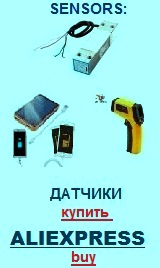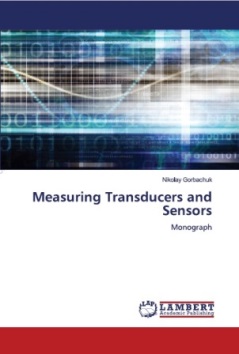Transducers, gauges, sensors - Information portal © 2011 - 2025 Use of material is possible by placing an active link
Physic - technical bases of work of measuring transducers of deformation - strain gauge (tensoresistors)
Work of strain gauge (tensoresistors transducers) is based on property of materials to change the electric resistance at mechanical deformations, arising up under the action of the attached force. The size of tensoeffect explorers is determined mainly by the change of geometrical sizes of resistor (wire, tape), and semiconductors - specific resistance because of change of effective mass and mobility of transmitters of current.
Wire strain gauge (fig. 1) is produced as explorers, tightly coupled with paper or pellicle basis 2. Explorer 3 is the zigzag put thin wire by a diameter a 0,02-0,05 mm, to the ends which soldering or welding conclusions (copper explorers 4) join. Explorers are closed by a paper, tape or varnish 1. After gluing on of linings of strain gauge on the investigated deformed surface deformation of this surface is passed to the explorers and causes the change of their resistance.

Home >> Bases of work of measuring transducers of deformation - strain gauge.
русский / english
Mechanical stress, strain
• Information about various converters and sensors of physical quantities, parameters of various physical processes is presented.
• Electrophysical properties and effects in various electrical materials.
• Theory, experimental results, practical application
Fig. 1. Construction of wire strain gauge .
Resistance of R of resistor, executed as a wire long l, is determined by the known expression.
R = rl/S (1)
where r is specific resistance of material of wire; S is an area of cross-sectional of wire.
Tensoeffect is characterized by an output signal, related to the relative change of resistance of resistor of ΔR/R. Attitude of relative change of output signal toward causing him relative deformation ε at the fixed values of sizes of current, temperatures, and other, named the coefficient of strain sensetivity tensoresistor.
k = ΔR/Rε
The relation of ΔR/R is determined (it is mathematically possible to get differentiating (1))
ΔR/R = Δr/r + Δl/l - ΔS/S
where ΔR, Δr, Δl, ΔS are changes of resistance, specific resistance, length and area of transversal resistance of explorer accordingly.
In area of resilient deformations using a theory for solids it is possible to get expression for the coefficient of tensosensitivity in a kind
k = 1 +2m + n
For explorers the constituents of m (coefficient of Puassone) and n (coefficient of elastic resistance ) small differ on a size. For semiconductors the size of n can on two orders excel m and depends on a temperature, deformation, crystallography direction. Therefore semiconductor strain gauge possess far greater strain sensetivity, but also more subject to influence of strange influences.
Quality of strain gauge is determined by their coefficients of strain sensetivity K and in size temperature coefficient of resistance (TCR) - ΔR/RΔТ. What higher coefficient of tensosensitivity To and less than temperature coefficient of resistance (TCR) of material which strain gauge is made from, the higher his quality.
For example, for wire strain gauge, made from the alloys of constantan and manganin k= 2, TCR= 30*10^-6 K^-1 and 10*10^-6 K^-1 accordingly. For semiconductor strain gauges k arrives at a size 100 and more (for example, silicic).
At foil strain gauge a pickoff is executed from foil in thick 3-6 mkm. Basic advantages of foil strain gauge it is been possibility of formation of tensogrates of any form and effective taking of heat in the process of measuring, that allows to get a greater output signal. Foil strain gauge is not sensitive to transversal deformations and can be made sizes from 0,3 mm.
Strain sensetivity attribute to one of basic metrology descriptions of strain gauge, creep, mechanical hysteresis, temperature instability.
Strain sensetivity is determined mainly by tensoresistanse properties of material of pickoff. Strain sensetivity is a basic parameter on which determine the size of measureable deformation
ε = ΔR/Rk
A creep shows up as a change of output signal at a set and unchanged value ε. Reason of creep is resilient imperfection of basis and glue.
Mechanical hysteresis, as well as creep, is conditioned by resilient imperfection of basis and glue and numeral determined as the difference over of values of output resistance brought to the entrance for the the same value of deformation on condition that this value of deformation is arrived at her smooth growth and smooth diminishing.
Temperature instability, consists in the change of resistance of strain gauge due to his TCR, and also due to appearance of additional mechanical tensions because of distinction in the temperature coefficients of linear expansion of material of strain gauge and investigated detail.
The important parameter of strain gauges is possible power which can disperse in strain gauge on condition that his overheat will not exceed a legitimate value. Possible power of strain gauge is in certain dependence on his geometrical sizes.
See also:
Modern semiconductor strain gauges (sensors) on a construction and technical descriptions differ from ...
At foil strain gauges a pickoff is executed from foil in thick 3..6 мкм.
Thickness of foil strain gauges less than wire and 30..50 mkm makes. Basic advantages of foil strain gauges ...

See also:
CONVERTERS, GAUGES, SENSORS
Information, news, advertising


